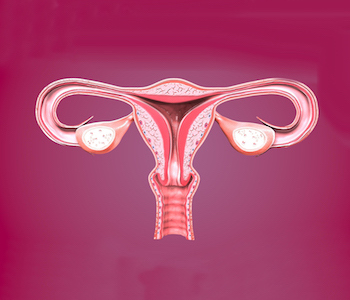Pap Test & Pelvic Exam
Pap Test
 The Pap test also known as the Pap smear looks for cancers and pre-cancers in the cervix (the lower part of the uterus that opens into the vagina). Pre-cancers are cell changes that can develop on the cervix and if not found and treated, can lead to cervical cancer.
The Pap test also known as the Pap smear looks for cancers and pre-cancers in the cervix (the lower part of the uterus that opens into the vagina). Pre-cancers are cell changes that can develop on the cervix and if not found and treated, can lead to cervical cancer.
The Pap smear is performed by using a speculum to view the cervix and using a soft plastic brush to gently scrape off cells. These cells are then evaluated in a laboratory to look for abnormal cells. We will receive the report, usually within a week. Your physician will determine if any action is needed.
The goal of a Pap test is to pick up precancerous diseases of the cervix, which can be successfully treated, thereby preventing cervical cancer. Sexually transmitted diseases can also be diagnosed and treated through information gained from the same pap smear.
A Pap test does not detect HPV itself. The speciem received will be looked under a microscope to view cervical cells and to detect signs of abnormal cell changes that may be caused by HPV. These cell changes may lead to cervical cancer if left untreated.
The frequency of Pap smears is determined by many factors including age and past history. Please see below.
The HPV, high risk strains screening is a separate add on test done in conjunction with the pap in select age groups. For information regarding HPV (link)
Pelvic Exam
A pelvic exam is a visual and manual inspection of a woman’s genital area. This does not necessarily include a Pap smear.
Your health care provider will examine the skin of the vulva, vagina and cervix, looking for any skeptical lesions. These may represent vulvar diseases or skin cancers. He or she will also perform a bi-manual exam, which means the pelvic organs (uterus, the ovaries, the bladder and the rectum) are felt between the physician’s hands. This allows us to feel for pelvic masses.
A pelvic examination can be used to evaluate problems such as pain, abnormal bleeding, or abnormal discharge as well.
The pelvic exam should be done every year as part of your physical, even if you have had a hysterectomy with removal of the ovaries. We are looking and feeling for more than just your uterus and ovaries
The pelvic exam occurs after a pap smear or in a separate exam all by itself. A pelvic examination will also usually be part of an ‘annual exam.’
Guidelines:
You may have heard that for healthy, low-risk women, the recommended frequency of Pap testing has changed.
At OCWMG our doctors follow the ACOG (American College of Obstetrics and Gynecology) and ASCCP (American Society for Colposcopy and Cervical Pathology) guidelines regarding your pap test.
These guidelines provide a minimum frequency for testing and are modified depending on your age, Pap history and health history:
Testing should begin at age 21. Routine screening is recommended every three years for women 21-65 years old. For women 30 to 65 years who have a normal pap test with a negative HPV test, screening can be done every five years.
Women should continue to have Pap tests until about age 65 – or sometimes later, if they have a recent history of abnormal Pap tests. If you are between ages 30 and 64, you should get a Pap test and human papillomavirus (HPV) test together every 5 years or a Pap test alone every 3 years. Some women may need them more frequent Pap test than others, your health care provider will notify you as to how often you should have them.
Usually women ages 65 and older who have had three normal Pap tests in a row and no abnormal test results in the last 10 years will no longer need to be tested anymore. Generally women who do not have a cervix (because of a hysterectomy) and who do not have a history of cervical cancer will not need a Pap test.
It is a common misconception that women think that since they don’t need a Pap test annually, they don’t need an annual exam. It is important to note that this does not mean that you do not need an annual pelvic exam. It is important to remember that your annual well woman exam is an essential part of maintaining your health and wellness, even if you aren’t having an annual Pap test.
Talk with your doctor about what is best for you.
Results:
Please allow 2 weeks from the time your specimen was collected. We will contact you if there are any abnormalities. If you Pap test is normal we will not contact you. You may check your results online through the patient portal. (link)
Please login to your patient portal to view your results.
